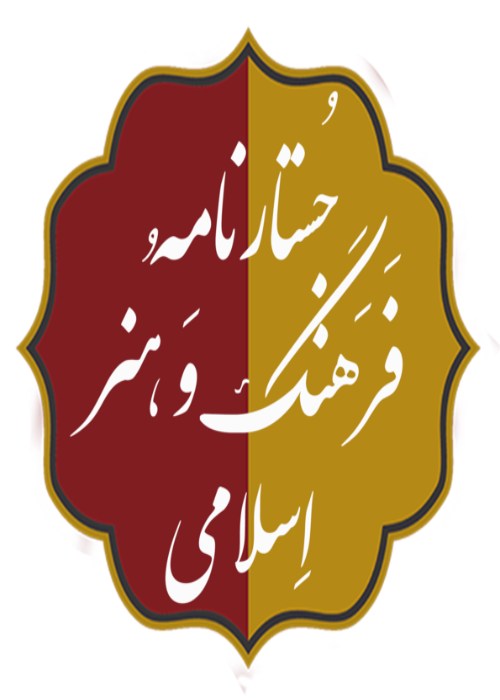Light and Chandelier in Islamic Art
Abstract Light has always been a symbol of theology in Iranian culture and therefore has a fundamental position in Islamic art. Islamic art basically uses the element of light as an allegory of the manifestation of absolute existence. Light is a manifestation of life and immortality and has been of special importance in many cultures, as a divine thing. In Islam, there are many verses, narrations and hadiths about light, which show the emphasis and attention of Islam on light. In the dictionary of the Quran, light is defined as follows: Light is what causes us to see things, its reflection or light rays from them to our eyes. Therefore, the visibility of objects depends on the existence of light, but in the phrase "Allah is the light of the heavens and the earth" it is meant that God Almighty is the light that even the existence of objects depends on his existence. In different periods and among civilizations, light has been used as a tool to express and emphasize the desired concepts and has played an important role in Islamic arts. Being aware of the role of light, artists have always taken advantage of it to give meaning to their works. One of the arts in which light is shown in a beautiful way is the art of glass and, accordingly, the chandeliers, which was used as one of the most widely used glass objects in mosques to provide lighting. Islamic architecture in Iran has a special emphasis on light and it is considered as the manifestation and symbol of existence. This architecture always reflects the holy place, life and the presence of light and affects the human soul. In Iranian architecture, the metaphor of light creates metaphysical meanings, and that is the constant presence of Yazdan. Light is always a virtue from heaven, truth and knowledge, even if it is sometimes hidden in the shadows of darkness. In Iranian architecture, light is not used uniformly and the use of this element has been very diverse and variable. Aqueducts and wooden windows decorated with colored glass with geometric composition are different methods of giving light, and it is this constant change and variety of color and light shade that conveys adequate and appropriate visual messages to the human eye can see. Paying attention to the role of light in art and architecture in the Islamic period is such that some people consider light to be the most important factor determining the identity of the work. For example, Bolkhari believes: "Light determines the intrinsic identity of the work of art. That is, it not only makes the work a symbol of the luminous manifestation of existence, but also gives it a glory that directly depicts "Allah is the light of the heavens and the earth". In mosques, to create a spiritual space, light is used as something beyond matter, and in order to direct it as best as possible to the interior spaces, various methods and techniques are presented, which is made possible by the design of light passages. In connection with the role of light in spiritual spaces, Titus Burckhardt said: "You cannot find a more complete symbol than light for spiritual unity. For this reason, Muslim artists are looking for materials that can make the light flutter in a way. The mosque is considered one of the most important elements of Islamic architecture and Islamic religion, and the Muslims of early Islam used it not only as a place of worship, but also as the most important center for gathering and solving community issues. Over time, the mosque became a place for the manifestation of the content and spirit of Islam, because artists could decorate it with arts such as calligraphy, tiling, and the use of the element of light. On the other hand, the Holy Quran is a source of inspiration for artists, and Quranic verses are the best moral and Islamic teachings that can be used in the mosque to remind people. Therefore, Quranic verses and decorations such as plant and geometric motifs were mixed together and the most beautiful and thought-provoking works of art were found in the mosque with the combination of light and color. Among the important furniture of mosques where light is manifested is chandelier, especially the luxurious type of it was placed next to the altar. By studying the position of light in Islamic art, this research tries to answer the question, what is the meaning of light in Islamic art and how is it shown in glass lanterns? By studying the concept of light in Islamic philosophy and on the other hand by studying different types of chandeliers, their structural form and how to use them, the result indicates that unlike other lighting devices which are used only as a tool to provide light, the chandeliers is not only It is a means of giving light to the surrounding environment, and at the same time, it also carries a valuable spiritual concept, thought and philosophy, which represents the highest gifts, that is, divine light. Also, the use of the role of this lamp in other Islamic arts such as painting, plastering, or literary poems can also confirm the spiritual use of these vessels.
- حق عضویت دریافتی صرف حمایت از نشریات عضو و نگهداری، تکمیل و توسعه مگیران میشود.
- پرداخت حق اشتراک و دانلود مقالات اجازه بازنشر آن در سایر رسانههای چاپی و دیجیتال را به کاربر نمیدهد.


